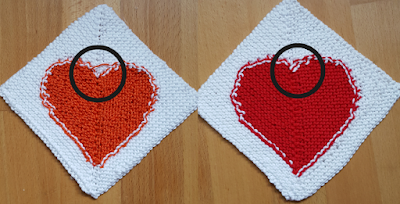This pattern is available for purchase
The PDF includes a written version and a shorthand version of the pattern. It also contains a chart to show how the short rows stack up to form the wedges.

Materials
Size
Unblocked the scarf measures about 40 cm in width and 185 cm in length. I guess blocked it would be about 5 cm wider and 20 cm longer.
(Even though I'm a firm believer in blocking (it evens out the stitches and make a garment look better), I didn't block this wrap for a number of reasons. It was big enough already and since I used merino which stretches quite a bit. Beside the stitch tension looked good and (on a more practical note) the blocking mat I use wasn't quite big enough.)
Necessary Skills
Besides being able to knit plain garter stitch you need the following knitting skills to complete this wrap:
This blogpost has been featured at New Tuesday Pin-spiration Link Party. Thank you!

Materials
- about 250 grams of DK weight yarn in your main color (I used Rico Essentials Merino DK, but other yarns will do as well)
- about 100 grams of DK weight yarn in contrast color 1
- about 100 grams of DK weight yarn in contrast color 2
- about 100 grams of DK weight yarn in contrast color 3
- 4.5mm knitting needles (I used circulars, but straight will do as well)
Size
Unblocked the scarf measures about 40 cm in width and 185 cm in length. I guess blocked it would be about 5 cm wider and 20 cm longer.
(Even though I'm a firm believer in blocking (it evens out the stitches and make a garment look better), I didn't block this wrap for a number of reasons. It was big enough already and since I used merino which stretches quite a bit. Beside the stitch tension looked good and (on a more practical note) the blocking mat I use wasn't quite big enough.)
Necessary Skills
Besides being able to knit plain garter stitch you need the following knitting skills to complete this wrap:
- Short rows with wrap and turn
- Intarsia
Helpful skills (but not absolutely necessary):
- Weaving in ends while knitting
- Stranding yarn upwards
This blogpost has been featured at New Tuesday Pin-spiration Link Party. Thank you!





































